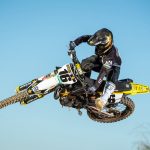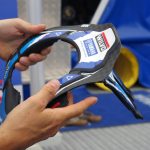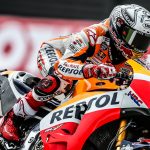Braking is essential for competition and safety in one sport and is perhaps something of a diminishing art in the other. We chat with Andrea Dovizioso and Brembo about stopping MotoGP bikes and the forces this entails and then flip the coin by asking MXGP racers how modern day tracks are lessening the need for fierce out-braking skills on the dirt…
You could say that success in motorcycle racing is about effectively halting the bike as making it as fast and rideable as possible. At least in one discipline. Braking is another sphere of riding where road racing and motocross differ so wildly.
Slowing a factory MotoGP machine is a punishing feat for both the riders and the teams’ budget sheets with Italian specialists Brembo supplying the entire grid with space-age type performing carbon. Speeds will top 360kmph and the pressure and precision on the lever and pedal is validated by the tiniest fractions of time (as I write the top twenty in Free Practice 2 at the Sachsenring in Germany is split by less than a second). In MXGP riders admit that a sandy Grand Prix can be completed without any front brake at all. The wavy and flowing nature of 21st century circuits (ten of the twenty venues in 2018 are man-made or purpose built layouts) promotes rhythm and intensity while attempting to curb high speed: passing usually comes through line choice, traction, corner exit speed and sheer will rather than a hard sweep into a turn on the brakes.
In an effort to dissect this facet of top level competition we coveted opinions from several riders in MXGP – from young to veteran – and also quizzed 2017 MotoGP runner-up, Ducati Racing Team’s Andrea Dovizioso (as well as asking Brembo for some insight to the fierce conditions on the asphalt). The aim was to highlight some of the skills and demands of what the riders are doing on the motorcycles and something that maybe fans are not so aware of…
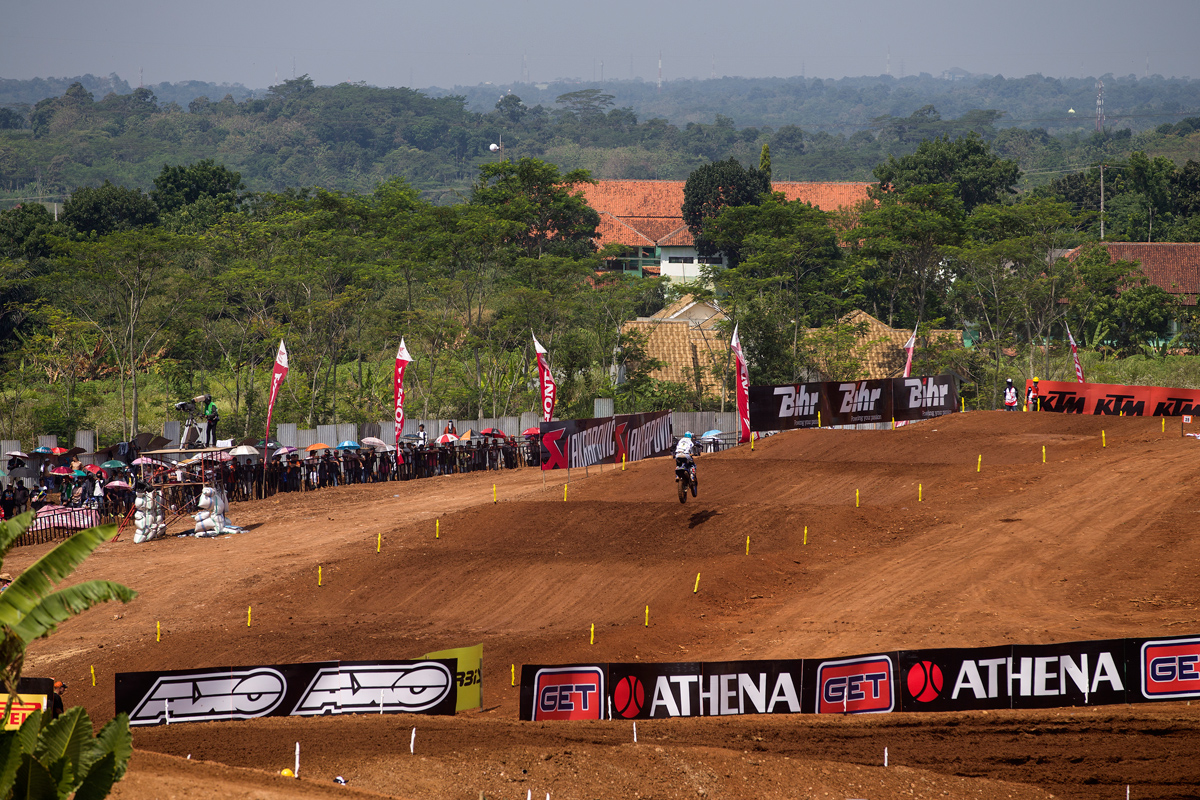
All about the tracks?
Ben Watson, Kemea Yamaha, MX2: “Tracks are completely different now. If you watch videos of past races then it’s clear that modern tracks are far more ‘built-up’ and are usually in a flat field and the jumps and sections are made to spec. We miss hills and big downhills where braking is more essential.”
Kevin Strijbos, Standing Construct KTM, MXGP: “When I was first in Grands Prix tracks were quite flat because they were not groomed or ripped. So you had to brake harder. Now they are more rutty and some small jumps are built on the inside of the turns. You don’t have to brake as hard as you used to.”
Shaun Simpson, Wilvo Yamaha, MXGP: “There are too many tracks now that seem to be all about this essence of ‘flow’. That’s great…but there has to also be some 90 degree corners and hairpins to actually entice braking, getting almost stopped and on the gas again; these are three areas where you can make up time. If you keep flow then 95% of the people out there can do that to within fractions of a second. The moment where you have to brake, hit your line, accelerate, get traction, deal with bumps, make your suspension work: these are things that make the difference and one rider better than the other.”
Max Nagl, TM Factory Racing, MXGP: “The biggest problem at the moment is something similar to what Formula One had a few years ago in that there is less passing. It is so difficult. Many times there are just one fast line and if you get out of that then it’s too slow to pass.”
Strijbos: “I like the old school tracks because there are more options for overtaking. They are not that ripped and it is easier to change from the outside to the inside. Now, sometimes, the ruts start before the corner and you just have to choose a rut and stay in it. There are also a lot of jumps. If you find a good flow then it is easy, if not then you struggle. It feels harder to make passes.”
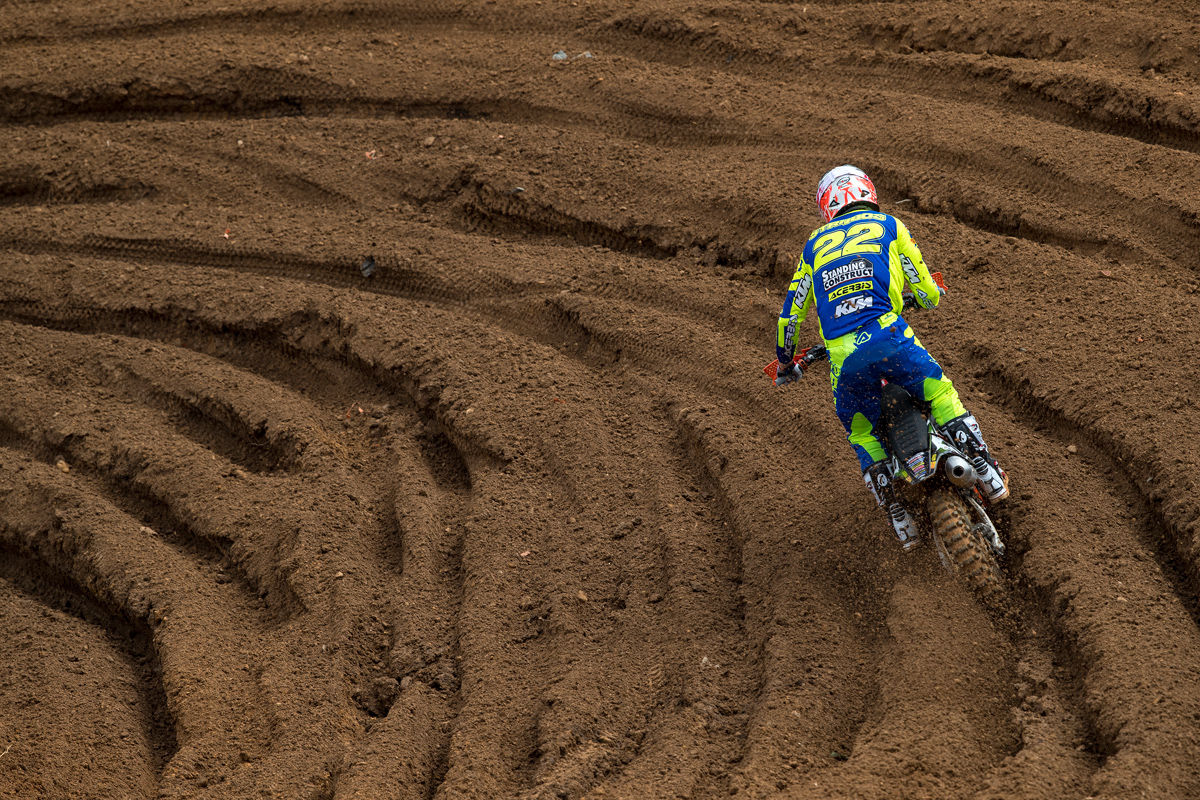
Is braking a lost art?
Tim Gajser, Team HRC, MXGP: “It is important. If you are even one metre longer on the gas then you are gaining tenths of a second. How you enter and take the corner and how you keep your momentum: braking is part of that. There are many techniques for many different types of corners: flat, off camber, berms, ruts. You have to be ready to adjust.”
Simpson: “After fifteen years it still amazes me how much time you can make by braking properly. People these days use way-too much rear brake and not enough front. The power comes from the front. I was shocked to see the gains I could make through braking on hard-pack recently because I’d been riding a lot of sand. In sand 90% of the lap you wont touch the front brake; it’s all with the rear. The moment you start touching the front in the sand then it wants to tuck and it won’t work at all. You want all the weight towards the back of the bike and that’s also where you brake.”
Watson: “Momentum is everything and now, in 2018, so much of a lap-time is down to the power of your bike and the speed you carry. It’s all about how late you can brake and how early you can get the throttle-on. You are working on every second of the lap. Going through a big set of rollers you are doing everything you can to keep the speed up. If you can make the turns work for you without much braking then you will be faster.”
Hunter Lawrence, Honda 114 Motorsports, MX2: “In MotoGP your braking sets up everything, and I think that can still be said for some of motocross as well. If you have a track where you can make the difference on a bumpy section then you can choose the route. You cannot jump pass someone in MotoGP! Being able to head into those bumps is part of what makes it so demanding on your whole body. I’m guessing the arms and upper body are bearing the most brunt in MotoGP.”
Strijbos: “I don’t make so many passes going into corners. I know where I should brake and I’m not going to do any stupid things to pass a rider or maybe make both of us crash.”
Nagl: “I think it is a lost art, and it’s because of the track developments. In the past they were hard and faster. On the straight you had more speed and could really catch-up some metres on the brakes if you could do it later. Nowadays the tracks are ripped so much and they are so deep with deep ruts that you cannot push until the last metre. You need to let-off the brake ten metres earlier, and before the corner you need to get on the throttle again for the ruts and bumps. Matterley Basin is a track where you really can work on the brakes.”
Dirk Gruebel, Red Bull KTM Team Manager MX2: “You also have the four-stroke factor. You needed more braking emphasis with the two-strokes because when you shut-off the gas the bike kept going. Now there is engine braking which the guys can also adjust – some prefer more and some prefer less – and that affects the set-up for brakes. I wouldn’t say that we have super-oversized brakes: they are the same dimensions that we were using ten-fifteen years. There might be some variation but we’re talking 260-270. Nothing like they use in road racing.”
Lawrence: “Engine braking? It has been so long since I rode a two-stroke so I’ve kinda forgotten what it is like! I late-brake but I also try to miss braking bumps. If there are some I can jump or lift the front over then I’ll do it. I do remember the two-stroke rolling the bumps better. The inertia of the four-stroke engine seems to suck on the bumps a bit more.”
Simpson: “Braking is a really underrated part of training as well. I remember being 13 years old out in a stubble field with two poles and my Dad saying I had to fully hold on the gas until the first post and had to be stopped-dead by the second. When he set the posts up I thought ‘that’s impossible…’. The first few times I overshot but then began to stop before the second post, so we made the distance shorter. I’ve see YouTube videos of Ricky Carmichael doing exactly the same training for supercross.”
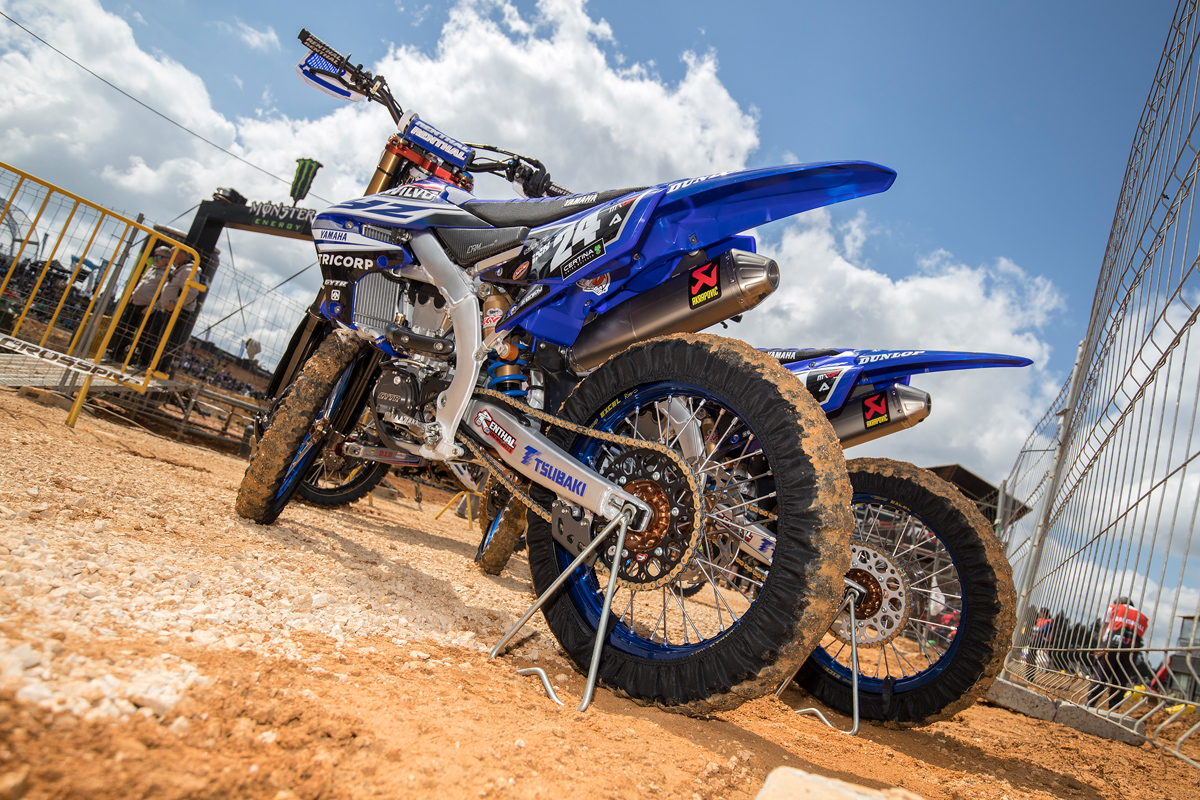
Testing for stopping?
Strijbos: “Every year brakes change a bit and seem to be lighter and stronger but only very slight changes. I never really recall having any problems with my brakes. We used to test at lot with different discs and different types of pads and cables.”
Watson: “Yeah we test for brakes. We tried some different sized rear discs. We don’t spend a lot of time on it but it’s about making the set-up more personal.”
Nagl: “I run Galfer brakes and they gave me an update this year with lighter discs and better braking power…but braking generally is still not as important as it was in the past.”
Simpson: “I don’t think you can make a massive gain by testing. I’ve used Moto-Master for years now. It is more a feeling preference. The power can come from how hard you grip the lever. My teammate, Arnaud [Tonus], likes a very aggressive front brake but I hate that. I like it to be almost spongy and really progressive and the further I pull the lever the harder the bike brakes, almost to the point where it can be nearly touching the handlebar. A lot of feeling. Arnaud like to just touch his and it’s locking up! With aftermarket brake parts the possibilities are endless with brake pad compounds and circumferences of the disc.”
Lawrence: “We tested but with the Honda the low centre of gravity is good and balanced, which is great on a hard-pack track because as soon as you are off a bump then the bike stops moving. It’s planted and ready to turn. This is a big positive because if the bike is settled and ready to turn then it makes your life ten times easier.”
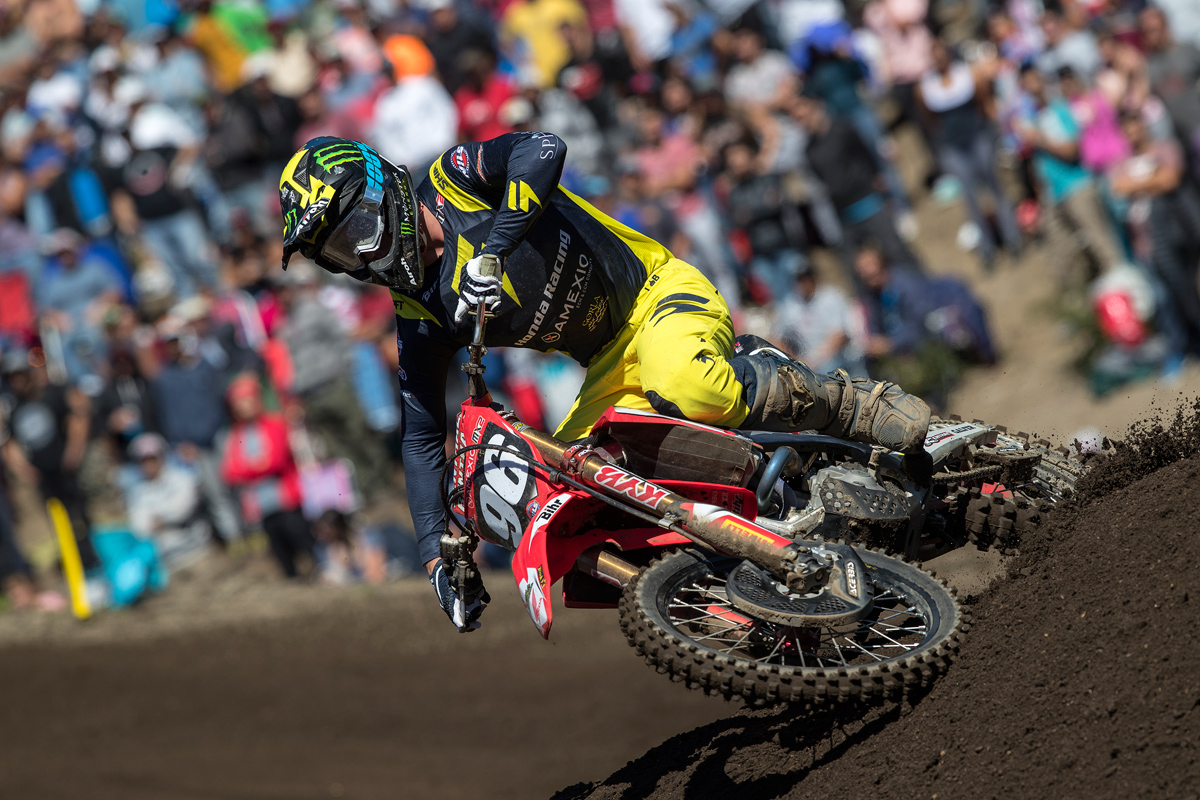
Striking the balance
Gajser: “I’m not too hard on the brakes. In the past yes, but now I am more balanced using both the front and the rear. I would say I am consistent.”
Nagl: “I liked a lot of front braking and was using special discs to be hard and strong and very aggressive, but on the rear I like it very loose. If the rear is locking too much then the suspension doesn’t work. Everyone has their own preference, and for a lot of years I liked the brakes very strong and hard and then I remember in 2015 I was in the US and I had to use [Christophe] Pourcel’s bike for training and he had the opposite: very spongy and I liked it and started using it more. I always brake with one finger, the same on the clutch, and his bike just made it less tiring.”
Simpson: “Back brake? I use it a lot. If you have a long corner then just easing your foot on the back brake a little while you are on full gas it makes the bike squat into the track a bit more and I feel that it gives me more traction and stabilises the suspension. If you hit a bump then there is less chance of it kicking. There is a lot more feel. But it is very hard on the material. The discs and pads heat up and past teams have cracked-up to see how hard I treat the brake. It is something I have tried to get out of. My disc will look black or deep brown because it’s been so hot whereas other guys’ will look brand new. They only brake for braking and not while on the throttle to produce ‘load’. I wouldn’t advise any kids to do that. You’ll get to my age and think ‘how many pads have I binned through my career?!’ There were some GPs where I’d need to have a new set of pads for each session. That technique is only really applicable to the rear but I suppose you could also use it lightly for the front on a low-speed flat turn to help force traction and feel. The front end is far more prone to losing grip.
Watson: “I use too much rear brake. We have over-sized discs on the front and normal on the rear but 70% of our braking is done on the front. It is much sharper and locking the back brake just induces a slide. The front brake just loads that area more. I typically drag the rear brake into corners and control the speed for entry. If I feel I’m going to miss it then I’m applying more pressure. It’s something I need to work on actually.”
Lawrence: “I’ve never had a problem with overheating so I guess you can say I’m quite a balanced braker. I probably use the front more than the rear. You have to keep the speed so as soon as I’ve finished my braking I try to get back over the bike and be strong. I think your body position plays a part and if you are crouched, ready and slightly set to the rear of the bike then you’ll be in a better place to cope with a braking bump.”
Watson: “I’m sure if you lost your front brake in sand then you wouldn’t affect your speed at all.”
Simpson: “On hard-pack I would go as far to say it is 70-30 front-rear braking going into turns. You can get later and later but it still comes down to carrying momentum in the corner. You can leave your braking really late and then wreck your flow; that’s fine if you want to make a pass and block the other guy but not useful otherwise. You want to be braking but with the power on so that when you let-off then you are already driving through the turn.”
Lawrence: “Your style generally stays the same no matter what bike you ride. Comparing the Japanese bikes to the Austrian ones it seems those guys have less of an issue in deep sand with the bumps wanting to stop and grab the bike. They tend to roll over. I think that is more the bike rather than the rider and maybe the area and emphasis on development.”
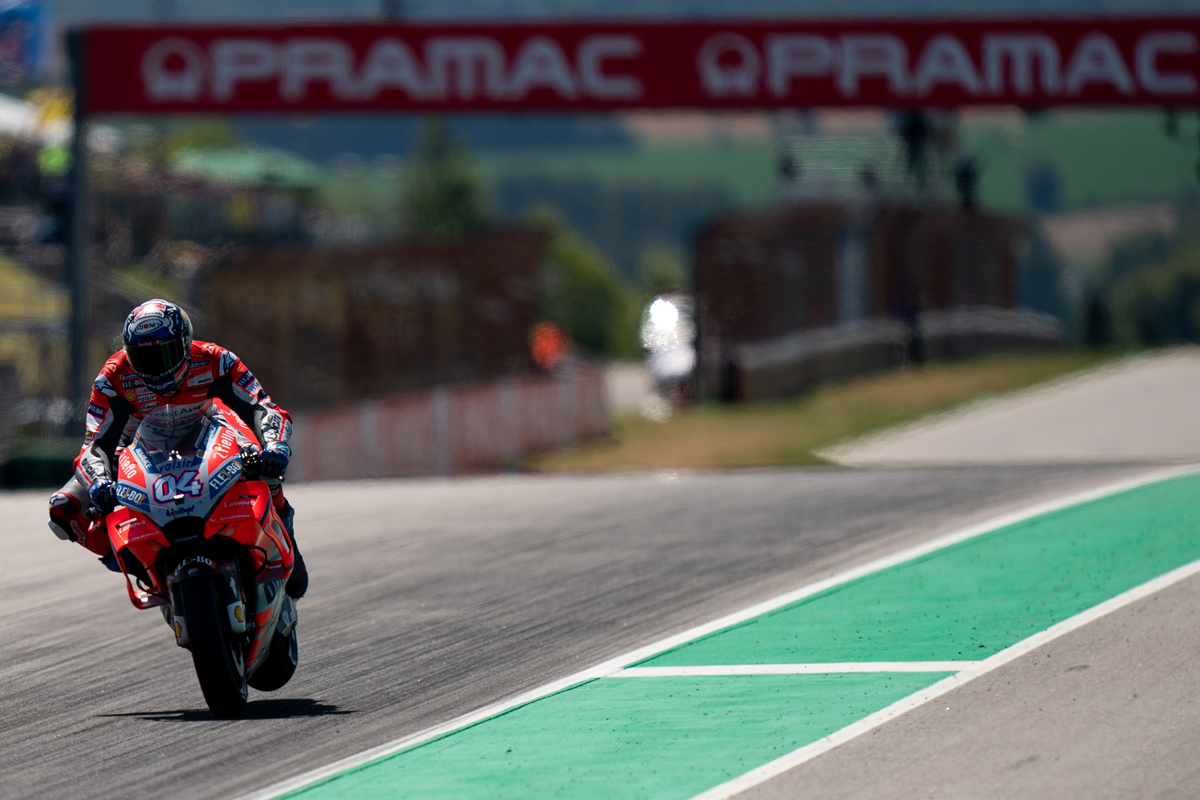
Upping the stakes: MotoGP
Lorenzo Bortolozzo MotoGP Customer Manager: “We supply all the MotoGP riders and almost all the Moto2 and Moto3 riders with our calliper, discs, pads and master cylinder. We design and produce all the parts in Italy, in our facility close to Bergamo [northeast of Milan]. The whole process from design and manufacture is done inside Brembo but we use some external suppliers, for example the carbon material comes from Japan because it is not so easy to find the right material for the MotoGP application. We ask them to produce the carbon according to our specs and we machine and assemble the disc inside Brembo.”
Andrea Dovizioso: “People will never be able to understand the intensity we have to put on the brake; it is something unreal, and year-by-year it has become more and more. The bikes and tyres are always improving but the human body is always the same! We have to use the energy in a different way. It is so hard.”
Bortolozzo: “The braking power is very high and the limit of our system is not the brakes or the material but the tyres. It is not the force but the grip. You can see that when the riders are braking and slowing on just one wheel. The power is more than enough and the rider has to manage this power and the way to do it changes according to the rider.”
Dovizioso: “The problem is that it is very easy to arrive to the limit of the rear tyre. If it starts to lift then you have to ease pressure on the brake; this is bad. You have to try and brake hard and strong and if you have to let-off then you lose a metre. You have to push your weight to the rear of the bike as much as you can and if you use all your muscle strength you can stabilise the bike and brake to the maximum. Also in our sport it is impossible to breath in a relaxed or normal way. You have to ‘cut’ your breathing most of the lap and that’s the reason why our heart rates are so high from the beginning to the end. It is not just intensity but breathing.”
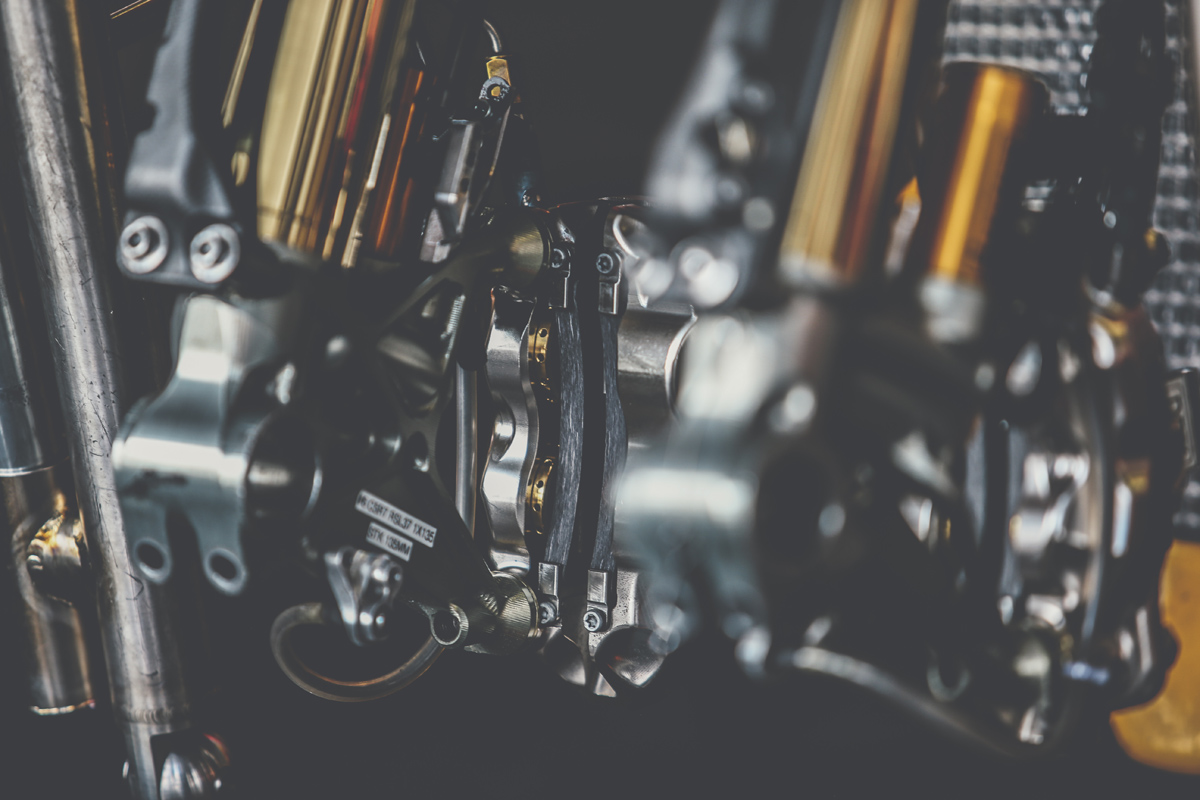
Bortolozzo: “It is impossible to use carbon on the street because the working temperature range is between 3-800 degrees. Under 300 the friction co-efficient is very low. It is dangerous because when you exit from your garage at home the brake system is cold, even more so in wintertime. Some very expensive cars using carbon ceramic, which is a different material. Carbon is very stable because the dimensions and thickness are always the same. With steel – if the temperature increases a lot – then it is possible to bend the disc and it is dangerous for the residue on the wheel. In the last three years in MotoGP we have also used carbon in the wet, which was impossible in the past but now we have designed a specific tool with the carbon cover and this means it can be used in the wet. The riders also like to have the same means in every condition whether it is dry or wet. I think in 5-10 years we will see carbon-ceramic on the street.”
Dovizioso: “I use a lot of rear brake but I am not one of those riders that uses it in the middle of the corner. You can split the riders: there are some that never move their foot on the footpeg. They use the brake much more than other riders from the middle of the corner and while they accelerate…like [Jack] Miller, Casey [Stoner] and some others. Then there are some like me who don’t use it so much and count on engine braking. I use it on corner entry and the first degrees of lean and then move my foot back to the peg so I cannot use it in the middle of the corner, so this is the reason I have the thumb brake.”
Bortolozzo: “We don’t have a single shape of carbon disc, we have two different diameters. The most important thing is the correct temperature range. For that we have to consider the track. Somewhere like Motegi [Japan] is very demanding on the brakes whereas Assen [Holland] is very light so we have to define the correct disc and calliper. We have to find the right specifications and the braking style of the rider is another factor. Some are ‘gentlemen’ with the system and not so demanding. Others like Dovizioso, Rossi and Marquez are very aggressive. So we need the right package for the track, rider and bike.”
Dovizioso: “The biggest difference now is not the braking but the corner-exit. There are much more electronics and you have to try and use less of the electronic ‘effect’ with your riding. If you pick up the bike out of the corner and head onto a straight then you have more wheelie and the electronics will work more and you don’t accelerate fully. If you keep full throttle and set-up the electronics in a certain way then you can weave across the track and this is faster. The bike wheelies less and there is more balance. This why you see a lot of riders moving across the track out of a turn and not just going straight-on. Using less electronics means more acceleration but this means more energy because you use more of the corner and you have to pull the bike with full throttle and maximum power: you have to shift and use all the track until the next braking zone. There is a lot of intensity everywhere. There is no moment to relax.”
Bortolozzo: “The rider doesn’t change the setting while on the bike but he will use a remote adjuster. An important thing for the rider is to have the lever and the initial bite in the same position but the position changes when the system is either cold or hot and depending on the wear of the carbon pad and disc. With the remote adjuster the rider is connected to the master cylinder and with his left hand is able to set the position of the lever. Dovi is very demanding because he wants the lever exactly right every time he brakes. We’ve improved our product a lot due to Dovi’s requests over the years! But all the riders are demanding.”

Dovizioso: “I hate a spongy brake and every mechanic that has to work with me hate me for that! On one side they are happy because they know they are working with a precise rider and I know what I want and I’m clear about what I want. I never change. On the other hand a small problem with the brake is a big problem. It has to be perfect and it is always a lot of work because I am a hard braker; it has to be very reactive and consistent. I think I am the rider that moves the front brake remote adjuster more than anyone else. It depends on the track and if it’s qualifying or the race but I can move it up to eight times a lap. The way you brake changes the position of the lever. If you are hard-braking until the middle of the corner then the lever gets closer to the bar and it remains that way for the next corner. To have that ‘perfect brake’ you need to prepare and have the lever the way you want it. I am thinking about my braking and then the position of the lever in the next corner.”
Bortolozzo: “The cost of the brakes and the carbon is very high because of the cost of the material [a MotoGP factory team’s racing budget for brakes is estimated around seven figures]. The master cylinder and calliper is pricey because of factors like the calliper being monoblock; a special tool has been designed to machine the calliper to guarantee the minimum weight but also maximum stiffness. The price is not only the material and production but also the R&D and our test team. Wear? During one weekend can use three different sets of discs and pads. During the same free practice a rider can have one set on his first bike and a different set on the second machine. So it is tough to say how much usage it will have. More or less each rider will have eight sets of discs and the double of the pads.”
Dovizioso: “The speed we have at the track is amazing; so fast. So the braking is important. If you are racing at 300kmph then you cannot always brake at the same place and you are always a little bit earlier or later. If you are doing it at 250m before the corner then you have margin to play and everything has an effect: if you brake in the right way, if you have reacted well and if you have improved to manage the ‘lock’. There is a lot of this with Michelin – like a ‘ta-ta-ta-ta’ – almost like ABS and you have to feel that and control it. You have to be very reactive.”
Photos by Ray Archer @rayarcherphoto & CormacGP @cormacgp

